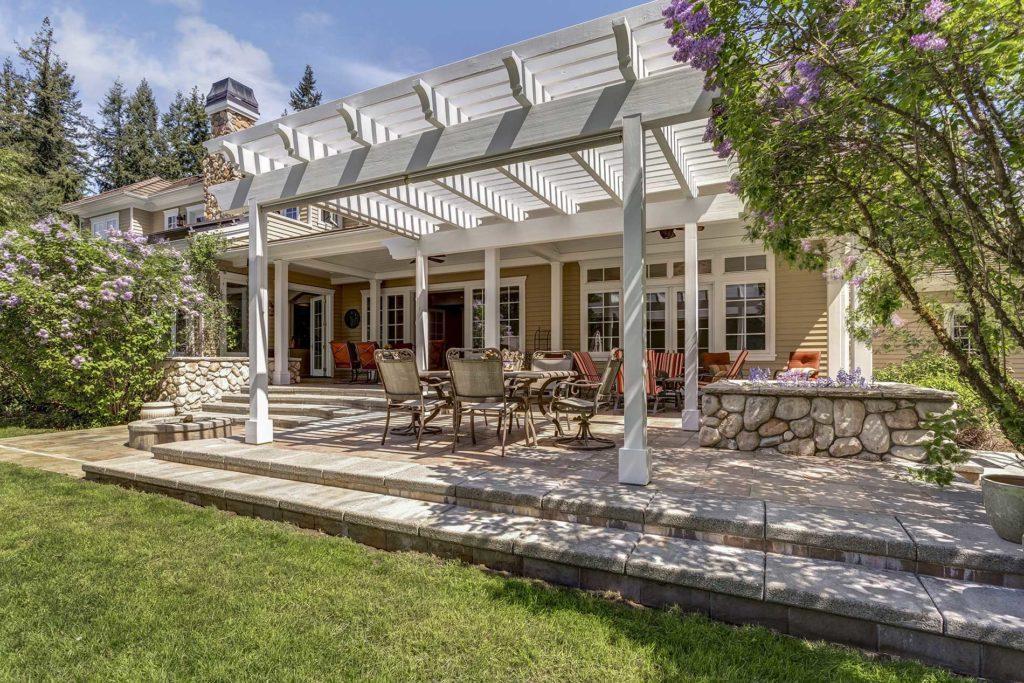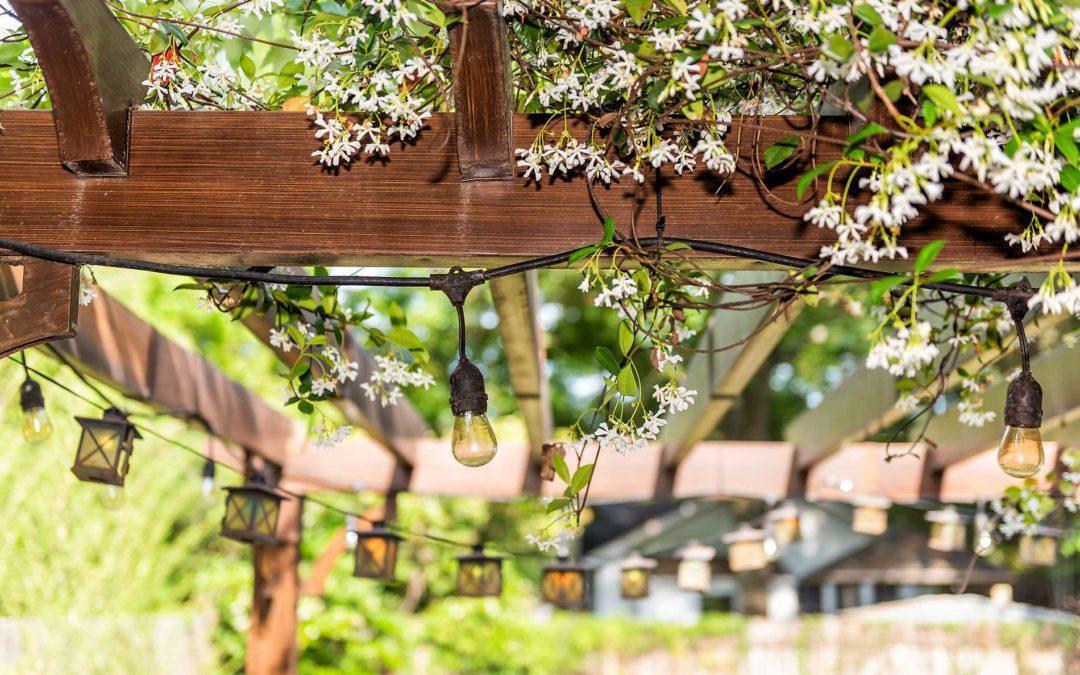If you are contemplating a fabulous update to your patio this summer, it is the right time to think about adding a pergola. A pergola is an open-sided structure that offers a focal point, and can also serve as a gorgeous, shaded seating area for outdoor sitting or dining. What’s more, it adds a very unique touch to a backyard once it is augmented with climbing vines and a border of colourful plants. When planning, here are a few considerations.
What is the most appropriate location?
Your pergola can be close to your house, or at the far end of your garden for a dramatic effect. Consider whether you will be serving meals – carrying items back and forth could be impractical! Will you need to pour a concrete slab underneath it, or will you use your lawn? If you have clay soil, you should be able to dig down to frost depth for the footings to prevent frost heave. If you have an existing patio, consider how you will pour the footings if you want to match your patio height. Keep in mind any slope in the area where your pergola might go.
Another option is building the pergola over an existing patio. With this, you save considerable time, money and effort establishing the base and anchoring the pergola corners.
What look do you want?
Your pergola can be made from wood, or hollow-core composite materials that have sufficient structural strength and durability. When screwed to the pergola top, these columns play the role of an anchor. They provide a stable and solid base for the overhead lattice framework. Both wood and composite can be painted. Pergolas can also be bought from your local garden store.
Cutting the Columns
Now you are ready to cut the pergola columns to length and fasten them to the footings or patio surface. For ease and convenience, you can number them. Finally, it might help to attach the columns to the house to keep them vertical.
Setting the posts in concrete
If you need concrete footings (ideal for solid wood, larger pergolas), consider putting the soil you have dug up in a wheelbarrow and save it.
Work around the layout string
The layout string helps ensure that the 4 holes are aligned. First, cut the forming tubes to the right size and insert them into the holes. Once done, level the top of each forming tubes until they are flush with the ground. If you plan to mix the concrete on-site yourself, you will need about five bags of Quikrete or Sakrete concrete mix per hole. On average, there are four holes. You can also call for a ready-mix concrete delivery. When doing so, order a half cubic yard.
Next, insert the pergola posts and pour concrete around them. As you set the posts, align the posts with your string line.

Call Us for a Quote
We’d be happy to chat with you this winter and provide an estimate for any part of your pergola project. This could include ordering the lumber or composite materials, installation, painting, and the plants to add to your structure. Emerald Irrigation & Landscape Construction is a full service irrigation and gardening company. Our professionals will help you design an awe-inspiring and visually-appealing pergola. Get in touch via the phone or email!

